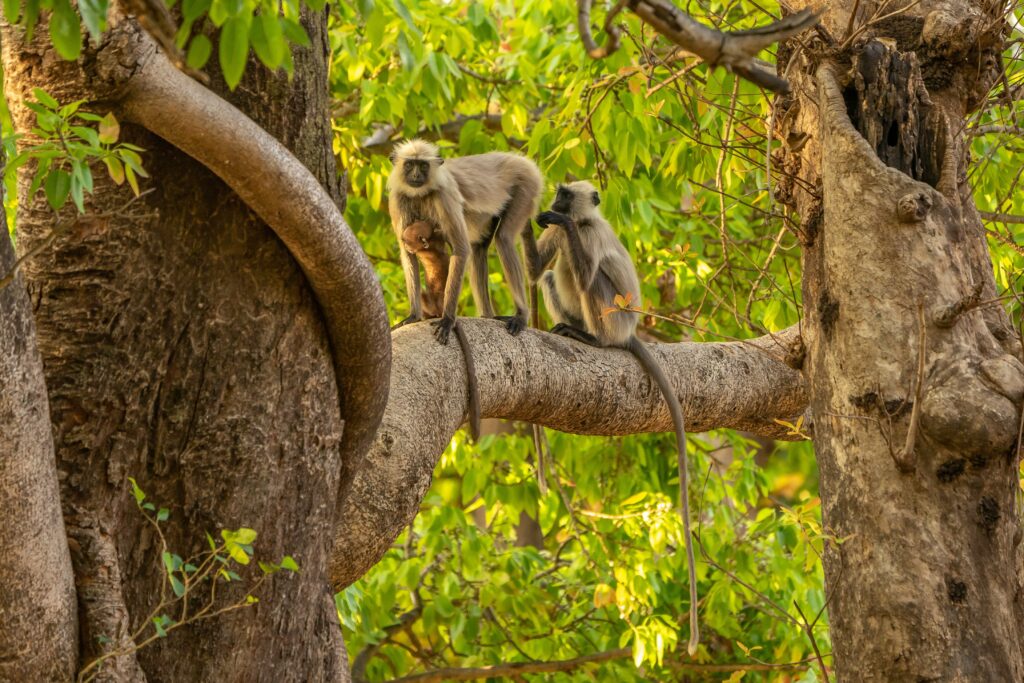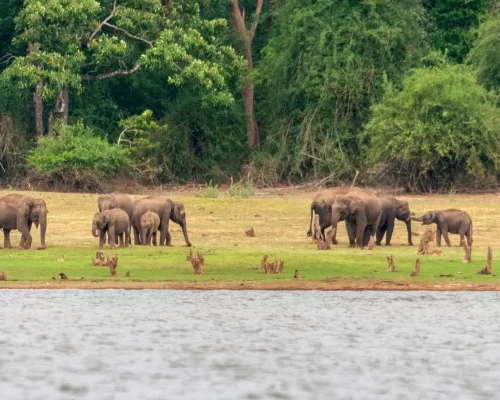In India, the Hanuman Langur is a more popular name for the Grey Langur, also known as the Indian Langur. It is believed to have obtained its name from the mythological monkey god Hanuman, who struggled to defend the wife of the illustrious Indian king Rama. When Hanuman became engulfed in flames, Langur monkeys rescued him while also suffering burns to their hands and faces. Thus, their most distinguishing features are their black hands and faces.
Hanuman Langurs are among the most revered creatures in the Hindu religion, and they primarily eat seasonal vegetables. They eat mature leaves to stay alive in the winter. They primarily eat fruits during the summer. Insects, tree bark, and gum are additional food sources for them. Hanuman Langurs can eat earth, stones, and highly toxic seeds and easily digest them.

Characteristics of Langurs
These langurs have black faces and ears and are primarily grey in colour (others are more yellowish). The principal external differences between the several species are the darkness of the hands and feet, the general colour, and whether or not there is a crest. Typically, all north Indian grey langurs walk with their tail tips looped towards their heads, but all south Indian and Sri Lankan grey langurs roam with their tails carried in an “S” or an inverted “U” configuration. Additionally, there are considerable differences in size between the sexes, with the male being consistently larger than the female. The length between the head and body is 51 to 79 cm (20 to 31 in). Their tails are always longer than their bodies, ranging from 69 to 102 cm (27 to 40 in). [7] Smaller than those from the north, langurs from the southern region of their range. The largest langur ever observed weighed 26.5 kg (58 lb), and it was a male Nepal grey langur. The larger grey langurs compete with one another to be the biggest species of monkey in Asia. Male grey langurs weigh 18 kg (40 lb), while females weigh 11 kg (24 lb).
Most of the time, langurs travel on four legs and move back and forth between the ground and trees. Additionally, they will leap and mount supports on two legs, as well as do bipedal hops. Langurs are capable of horizontal leaps of 3.6–4.7 m (12–15 ft) and descending leaps of 10.7–12.2 m (35–40 ft).
Ecology and Behavior
Gray langurs are diurnal. They sleep during the night in trees but also on man-made structures like towers and electric poles when in human settlements. When resting in trees, they generally prefer the highest branches. Ungulates, such as cattle and deer, will consume food that foraging langurs drop.
Tigers, dholes, and leopards all prey on langurs. Langurs can also be preyed upon by wolves, jackals, Asian black bears, and pythons.
Langurs of Kabini
They live in big groups and are nearly always visible while go on a jeep safari in Kabini, especially when you go on jeep safaris while staying at our resort in Kabini. Each group is headed by a male Langur. The group could have anywhere from 10 to 60 members.
Some Fascinating Facts About Langurs
“A Chital Deer’s Best Friend” is how langurs are referred to. The monkey can easily notice predators thanks to its keen eyesight and capacity to perch on tall trees. It frequently lives side by side with herds of Chital Deer and makes alarm cries when a predator gets close. As compensation, the Chital Deer uses its keen sense of smell to alert the Langur when something might be approaching while they are on land.
The Nagarhole National Park is a must-see destination for those who appreciate animals, the outdoors, photography, and adventurous travel. Its safari promises to be an unforgettable experience and allows you a chance to commune with nature. You can visit this amazing wildlife destination by staying at our resort in Kabini.



